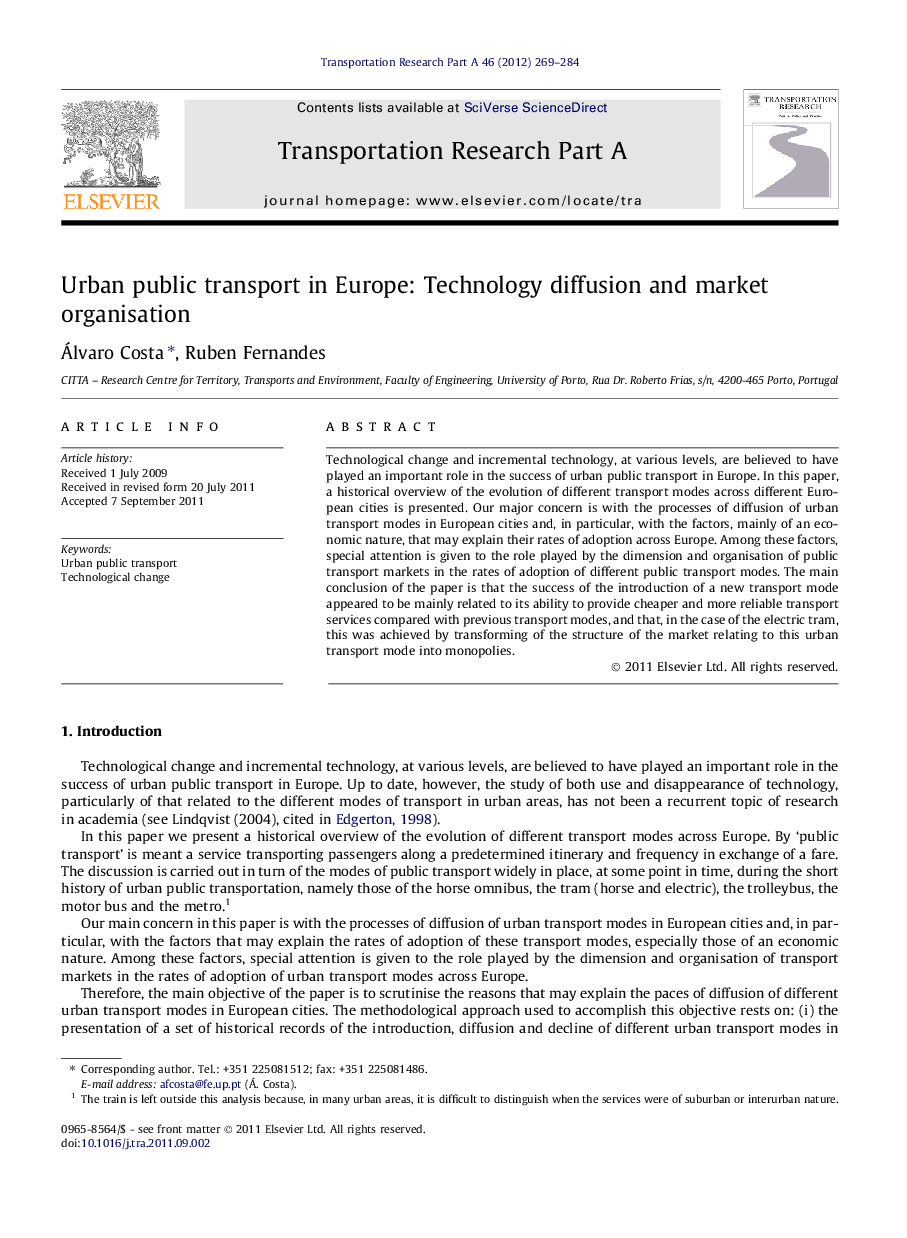| Article ID | Journal | Published Year | Pages | File Type |
|---|---|---|---|---|
| 312174 | Transportation Research Part A: Policy and Practice | 2012 | 16 Pages |
Technological change and incremental technology, at various levels, are believed to have played an important role in the success of urban public transport in Europe. In this paper, a historical overview of the evolution of different transport modes across different European cities is presented. Our major concern is with the processes of diffusion of urban transport modes in European cities and, in particular, with the factors, mainly of an economic nature, that may explain their rates of adoption across Europe. Among these factors, special attention is given to the role played by the dimension and organisation of public transport markets in the rates of adoption of different public transport modes. The main conclusion of the paper is that the success of the introduction of a new transport mode appeared to be mainly related to its ability to provide cheaper and more reliable transport services compared with previous transport modes, and that, in the case of the electric tram, this was achieved by transforming of the structure of the market relating to this urban transport mode into monopolies.
► The success of any new mode of transport was related to technology and costs. ► The fast diffusion of the electric is explained by the provision affordable services. ► Affordability resulted in the increase of public transport utilisation. ► Affordability was made possible by transforming transport markets into monopolies. ► Adoption of subsequent modes was driven by changes in technology rather than costs.
